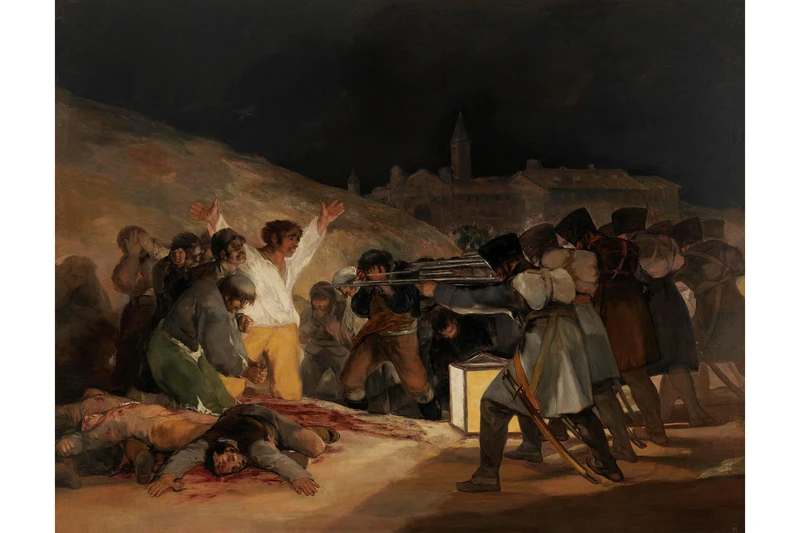Francisco de Goya


b. 1746, Spain
d. 1828
Francisco de Goya y Lucientes, Spanish painter, 1746-1828
Francisco de Goya was the leading Spanish painter and etcher of the late 18th century, and court painter to Charles III, Charles IV and Ferdinand VII of Spain. His work ranges from the Rococo style of his early tapestry cartoons for the royal tapestry works to the sombre Romanticism in which he recorded the atrocities of the Peninsular Wars, and to the 'black' paintings with which he decorated his own house. In addition to portraits, frescoes and tapestry cartoons, he was known for small paintings of theatrical subjects, like the Gallery's 'El Hechizado por Fuerza'.
Goya was born at Fuendetodos, near Saragossa, and trained by José Luzán in Saragossa (1760) and by Francisco Bayeu in Madrid (1766). He visited Italy in 1771. By 1775 he had settled in Madrid. In 1786 he was appointed court painter to King Charles III, but was made First Painter to Charles IV in 1799. In 1792, after a severe illness, he became deaf. Goya also painted the famous clothed and nude 'Majas' (Madrid, Prado), in response to the 'Rokeby Venus' by Velázquez (in the Gallery).
Goya witnessed the atrocities of the Peninsular War, and the subsequent political repression, and recorded them in his later works, such as 3rd May 1808. He went into exile in Bordeaux in 1824, where he died in 1828.